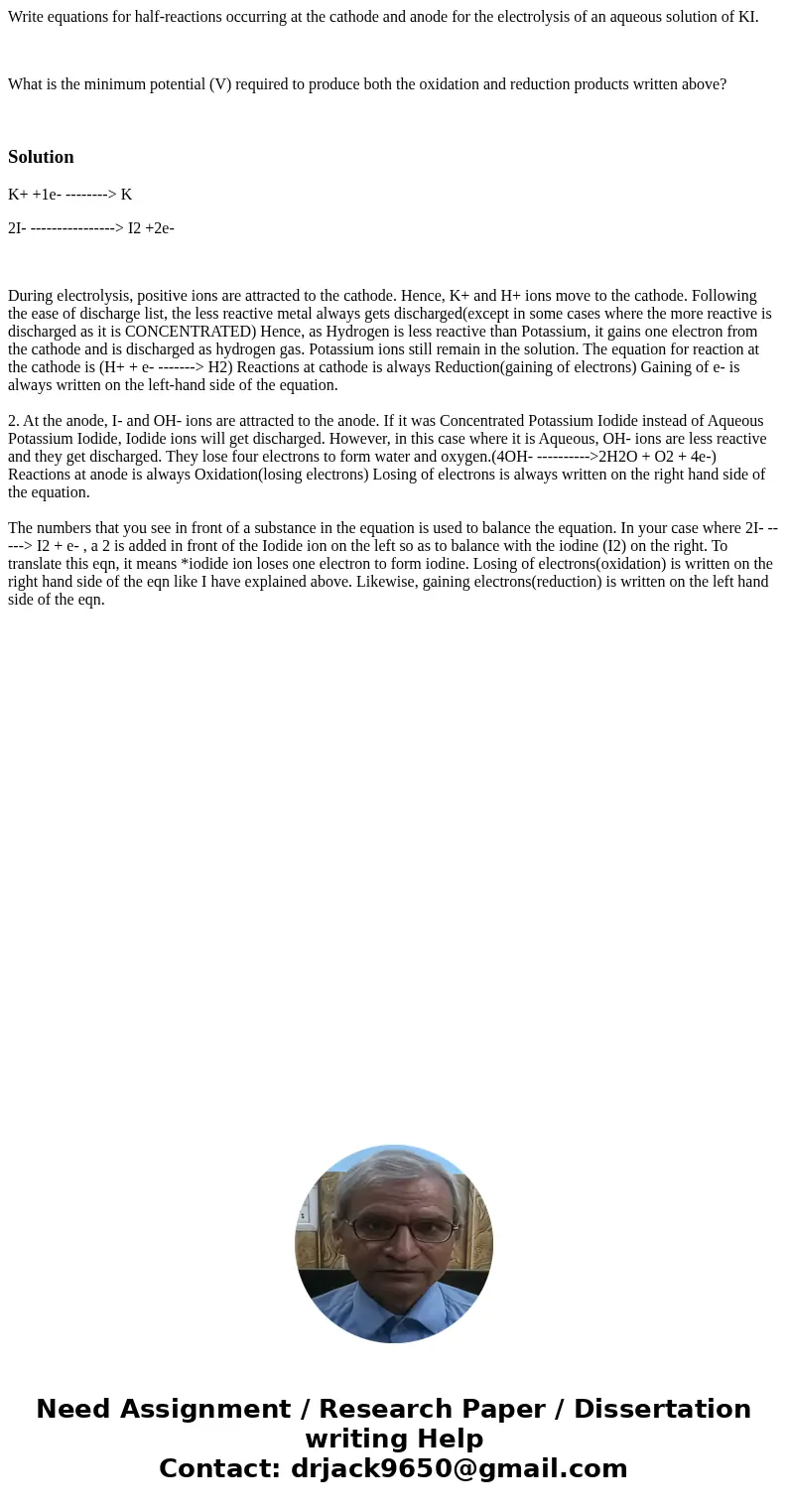Write equations for halfreactions occurring at the cathode a
Write equations for half-reactions occurring at the cathode and anode for the electrolysis of an aqueous solution of KI.
What is the minimum potential (V) required to produce both the oxidation and reduction products written above?
Solution
K+ +1e- --------> K
2I- ----------------> I2 +2e-
During electrolysis, positive ions are attracted to the cathode. Hence, K+ and H+ ions move to the cathode. Following the ease of discharge list, the less reactive metal always gets discharged(except in some cases where the more reactive is discharged as it is CONCENTRATED) Hence, as Hydrogen is less reactive than Potassium, it gains one electron from the cathode and is discharged as hydrogen gas. Potassium ions still remain in the solution. The equation for reaction at the cathode is (H+ + e- -------> H2) Reactions at cathode is always Reduction(gaining of electrons) Gaining of e- is always written on the left-hand side of the equation.
2. At the anode, I- and OH- ions are attracted to the anode. If it was Concentrated Potassium Iodide instead of Aqueous Potassium Iodide, Iodide ions will get discharged. However, in this case where it is Aqueous, OH- ions are less reactive and they get discharged. They lose four electrons to form water and oxygen.(4OH- ---------->2H2O + O2 + 4e-)
Reactions at anode is always Oxidation(losing electrons) Losing of electrons is always written on the right hand side of the equation.
The numbers that you see in front of a substance in the equation is used to balance the equation. In your case where 2I- -----> I2 + e- , a 2 is added in front of the Iodide ion on the left so as to balance with the iodine (I2) on the right. To translate this eqn, it means *iodide ion loses one electron to form iodine. Losing of electrons(oxidation) is written on the right hand side of the eqn like I have explained above. Likewise, gaining electrons(reduction) is written on the left hand side of the eqn.

 Homework Sourse
Homework Sourse